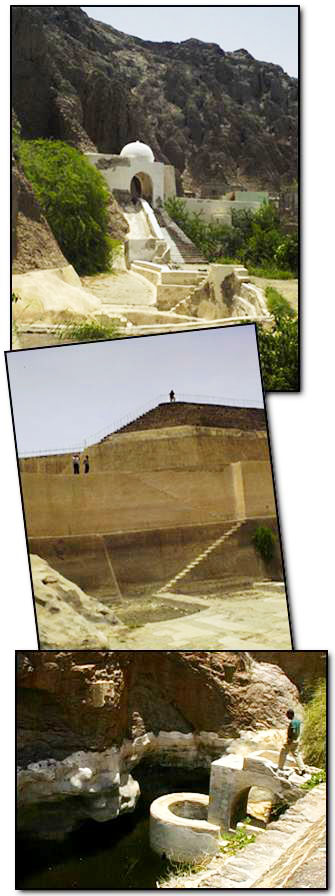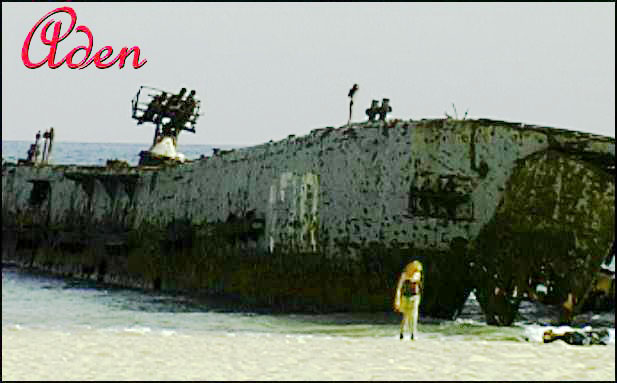|
Most Americans know Aden as the port where our battleship had a massive hole blown in it's side. Television showed us images of tiny boats with outboard motors, men in Middle Eastern head-wraps and our soldiers bleeding. These video clips perpetuated stereo-types and misinterpretations of Arab cultures. The Yemen government stated clearly that suspected organizer, Osama Bin Ladin, acted of his own accord and was not an agent of the Yemeni nation. Yemen has been a neutral and peaceful country.
|

Yemen was quick to reach out to join with American president Bush to condemn terrorism. A cooperative understanding currently exists which has further made the memories of the Cole an uncommon and unfortunate but isolated event. Although Aden can be intense, it is probably the heat though. Aden can reach 130 Farenheit in the shade! Aden is a sprawling coastal metropolis. Old world architecture is combined with modern doors, windows and other indicators of the Twenty-first Century. I thought I saw a fast-food restaurant as we were rolling through the city. Passing through the modern portions, we arrived in the Old City. The Ancient Dam at Aden
At the main gates to the dam a white plaque gives a partial history of the structure:
20th February 1899 The Aden dam is a series of descending channels and tanks. It was once used to collect and store the desert's most precious jewel: water. It was an engineering marvel even by today's standards, yet its original design and construction was completed two millennia ago.
We explored the cisterns and grottos of the dam. Thought to be constructed during the Himyaritic period, 100 A.D., it is amazingly intact. Climbing stairs that would suit an M.C. Escher illustration, we explored the cisterns and grottos of the dam. The eighteen cisterns can hold a 42 million liters of water. When they were first discovered, they were buried and filled with debris. Over the years the cisterns have been cleared and restored. Today they hold the periodic rains that fall in Aden. The dam is lined and made watertight by a combination of gypsum and natural cement, just as it was in the ancient times. The dam was dry when we visited in May. Rainfall is not regular or seasonal. Some years there is no rain at all while in other years there is so much that the capacity of the dam is reached in a single storm!
|

A restaurant in Aden was like those in any Yemen city. Tables were shared by the next hungry group. Meals started with fresh round bread and finished with sweet, hot shai. After the brief respite, we ventured out into the hot sun and headed for the beach. We rested beside the sea on a quiet stretch of beach after lunch. The mid-day heat was intense. I schucked off my veil and plunged into the surf fully clothed. The rest of the crew sat in some shade and chewed qat. The wreck of a ship [see top] was beached in the sand close by. I swam out to inspect the decaying vessel. A few local boys encouraged one another to jump from the gun turret into the water. They invited me to take a turn but I had to resist. The summer heat made the water of the Aden Sea warm. I wish I could have been cooled by the swim but it did little to quell the sleepy dreamlike haze of temperatures near 110 degrees Fahrenheit. Back in the shade we drank our remaining stores of water and then decided to head North to the cooler mountains. Yes, Aden was truly a hot spot on the globe -- hot but peaceful, and full of rich history. |
Previous Page || ViewZone || --next-->
